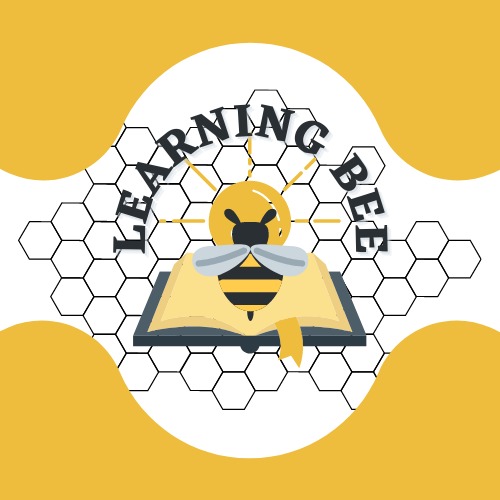Lesson 01
Prepositions
Some adjectives go with certain prepositions. There are no grammatical rules for which preposition is used with which adjective, so it's a good idea to try to learn them together. To help you do this, write new vocabulary in your notebook in a sentence or phrase.
However, there are some patterns that can help you. Let's look at them first. Remember that a preposition is followed by a noun or a gerund (-ing form).
with at
We use at with adjectives like good/bad/amazing/brilliant/terrible, etc. to talk about skills and abilities.
He's really good at English.
She's amazing at the piano.
They're terrible at organising anything.
I'm not very good at drawing.
with about
We often use about with adjectives of feelings like angry/ excited/ happy/ nervous/ sad/ stressed/ worried, etc. to explain what is causing that feeling.
I'm angry about the decision.
He's nervous about the presentation.
She's excited about the new job.
They were worried about the exam.
with of
However, sometimes we use of with feelings.
She was afraid of telling her mum.
I'm frightened of having an accident.
He's scared of flying.
You should be proud of your progress.
with to
We can use to show the connection between people or things.
He's married to the director.
I'm addicted to my phone.
I'm allergic to nuts.
It's similar to the old one.
with for
Refer following examples.
Exercise is good for you.
Stress is bad for you.
The town is famous for its cheese.
I'm responsible for the financial side of the business..
with in
She's
interested in you.
They want someone who's
experienced in design.
I didn't want to get
involved in the argument.
Lesson 02
Articles
Here are some of the most important things to know about using articles.
Jobs
When we say what people's jobs are, we usually use a/an.
He's an architect.
She's a scientist.
My grandmother was a teacher.
Singular nouns
Singular, countable nouns always have an article – a/an or the (or another determiner – my, your, this,
that, etc.).
We use a/an – the indefinite article – when we talk about something for the first time,
or something that is part of a group or type.
I saw a good film yesterday.
Do you want a drink?
We use a when the word that follows it begins with a consonant sound.
We use an when it's followed by a vowel sound. This makes pronunciation easier.
She has a university degree.
It took me an hour to get home.
We use the – the definite article – when the listener already knows which
thing we are talking about because it was mentioned before or because there's only one of them.
I'm going to take the dog for a walk.
Have you seen the car key?
They go to the school next to the bridge.
JobsThings in general
When we talk about things in general, we normally use a plural or uncountable
noun with no article.
Birds eat worms.
Water freezes at 0°C.
Children need a lot of sleep.
Lesson 03
Countable and Uncountable nouns
Nouns can be countable or uncountable. Countable nouns can be counted, e.g. an apple, two apples, three apples, etc.
Uncountable nouns cannot be counted, e.g. air, rice, water, etc.
When you learn a new noun, you should check if it is countable or uncountable and note how it is used in a sentence.
Countable nouns
For positive sentences we can use a/an for singular nouns or some for plurals.
There's a man at the door.
I have some friends in New York.
For negatives we can use a/an for singular nouns or any for plurals.
I don't have a dog.
There aren't any seats.
Uncountable nouns
We use some with uncountable nouns in positive sentences and any with negatives.
There's milk in the fridge.
There isn't any coffee.
Lesson 04
Phrasal verbs
Phrasal verbs are very common in English, especially in more informal contexts.
They are made up of a verb and a particle or, sometimes, two particles. The particle often changes the
meaning of the verb.
I called Jen to see how she was. (call = to telephone)
They've called off the meeting. (call off = to cancel)
In terms of word order, there are two main types of phrasal verb: separable and inseparable.
Separable
With separable phrasal verbs, the verb and particle can be apart or together.
They've called the meeting off.
OR
They've called off the meeting.
Here are some common separable phrasal verbs:
I didn't want to bring the situation up at the meeting.
(bring up = start talking about a particular subject)
Please can you fill this form in?
(fill in = write information in a form or document)
I'll pick you up from the station at 8 p.m.
(pick up = collect someone in a car or other vehicle to take them somewhere)
She turned the job down because she didn't want to move to Glasgow.
(turn down = to not accept an offer)
Non-separable
Some phrasal verbs cannot be separated.
Who looks after the baby when you're at work?
Here are some common separable phrasal verbs:
I came across your email when I was clearing my inbox.
(come across = to find something by chance)
The caterpillar turned into a beautiful butterfly.
(turn into = become)
It was quite a major operation. It took months to get over it and feel normal again.
(get over = recover from something)
We are aware of the problem and we are looking into it.
(look into = investigate)
With two particles
Phrasal verbs with two particles are also inseparable. Even if you use a pronoun, you put it after the particles.
Who came up with that idea?
(come up with = think of an idea or plan)
Let's get rid of these old magazines to make more space.
(get rid of = remove or become free of something that you don't want)
I didn't really get on with my stepbrother when I was a teenager.
(get on with = like and be friendly towards someone)
Can you hear that noise all the time? I don't know how you put up with it.
(put up with = tolerate something difficult or annoying)
Lesson 05
Stative verbs
Stative verbs describe a state rather than an action. They aren't usually used in the present continuous form.
Verbs that are sometimes stative
A number of verbs can refer to states or actions, depending on the context.
I think it's a good idea.
Wait a moment! I'm thinking.
The first sentence expresses an opinion. It is a mental state, so we use present simple. In the second example
the speaker is actively processing thoughts about something. It is an action in progress, so we use present
continuous.
Some other examples are:
have
I have an old car. (state – possession)
I'm having a quick break. (action – having a break is an activity)
see
Do you see any problems with that? (state – opinion)
We're seeing Tadanari tomorrow afternoon. (action – we're meeting him)
be
He's so interesting! (state – his permanent quality)
He's being very unhelpful. (action – he is temporarily behaving this way)
taste
This coffee tastes delicious. (state – our perception of the coffee)
Look! The chef is tasting the soup. (action – tasting the soup is an activity)
Other verbs like this include: agree, appear, doubt, feel, guess, hear, imagine, look,
measure, remember, smell, weigh, wish.
Lesson 06
Adjectives
Gradable adjectives
Most adjectives are gradable. This means we can have different levels of that quality. For example,
you can be a bit cold, very cold or extremely cold. We can make them weaker or stronger with modifiers:
She was quite angry when she found out.
The film we saw last night was really funny!
It can be extremely cold in Russia in the winter.
Non-gradable adjectives
Some adjectives are non-gradable. For example, something can't be a bit finished or very finished.
You can't be a bit dead or very dead. These adjectives describe absolute qualities.
To make them stronger we have to use modifiers like absolutely, totally or completely:
Thank you, I love it! It's absolutely perfect!
Their farm was totally destroyed by a tornado.
My work is completely finished. Now I can relax.
Lesson 07
Tenses
Simple Tenses
We’ll start with the simple tenses. These are probably the first tenses you learned in English. Simple tenses usually
refer to a single action. In general, simple tenses express facts and situations that existed in the past, exist in
the present, or will exist in the future.
Simple present: I drive home every day.
Simple past: I drove home yesterday.
Simple future: I will drive home later.
Progressive (Continuous) Tenses
Let’s go on to the progressive tenses. We use progressive tenses to talk about unfinished events.
Progressive tenses are also called continuous tenses.
Past progressive: I was driving when you called.
Present progressive: I am driving now.
Future progressive: I will be driving when you call.
Perfect Tenses
Now let’s look at the perfect tenses. Perfect tenses cause the most confusion.
To put it simply, they express the idea that one event happens before another event.
Present perfect: I have driven that road.
Past perfect: I had already driven that road in the past.
Future perfect: I will have driven 200 miles by tomorrow.
Perfect Progressive Tenses
Finally, let’s look at the perfect progressive tenses. Generally, perfect progressive
tenses express duration, or how long? Perfect progressive tenses usually include the adverbs for or since.
Present perfect progressive: I have been driving since this morning.
Past perfect progressive: I had been driving for three hours before I stopped to get gas.
Future perfect progressive: I will have been driving for five hours by the time I arrive.

